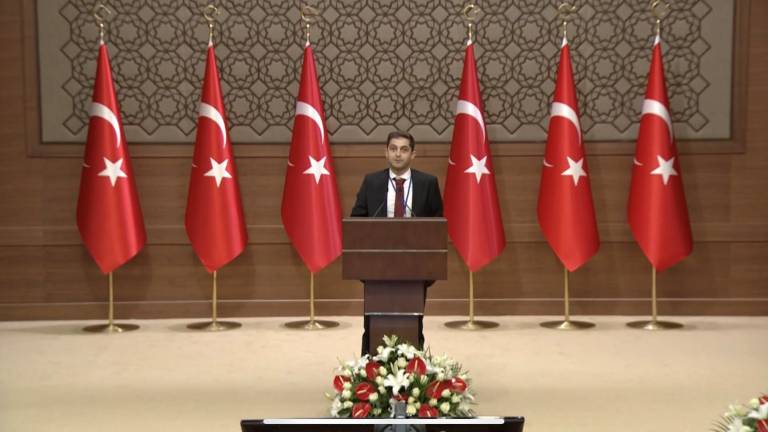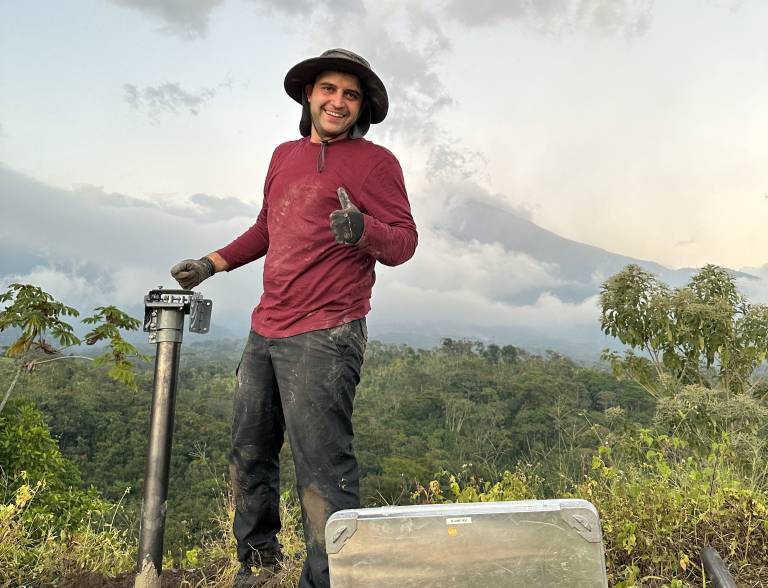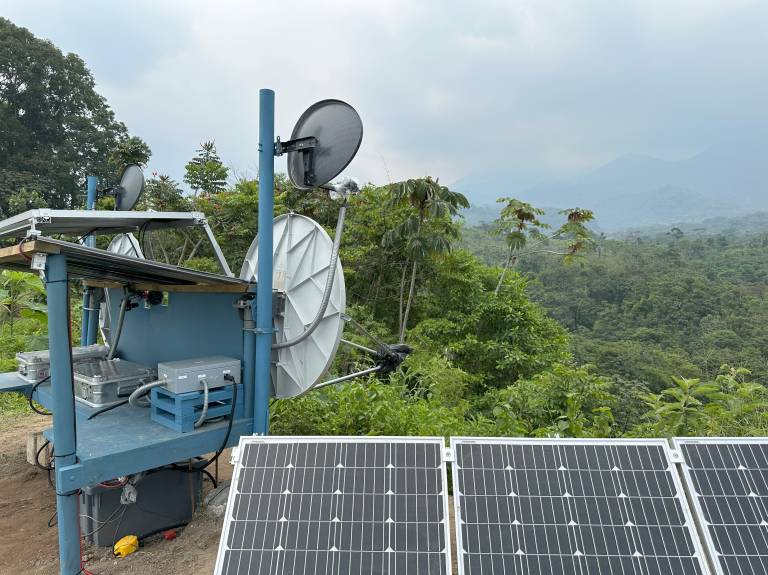UCL PhD student’s work on lava flow radar imaging presented at Türkiye’s Presidential Complex
9 November 2023
PhD student from UCL’s Electrical and Electronic department, Onur Kiris, has presented their research on monitoring volcano lava flows using radar imaging at Türkiye’s Presidential Complex.

Onur Kiris was invited by the Turkish Presidency to give a speech on his research on employing radar imaging to monitor an active volcano in Guatemala. The research has produced data never achieved before, with the potential to the improve accuracy of risk assessment tests and save lives.
Onur’s work is part of a joint project between the University of Durham, UCL, and the University of Liverpool and is funded by the Natural Environment Research Council (NERC) on High Resolution Radar Imaging of Pyroclastic Density Currents (HRRIPDC). His work on the project has already earned him the Cullen Prize at last year’s UCL Electrical and Electronic Engineering department’s Festival of Research for best poster presentation on “Automated Detection of Pyroclastic Density Currents”.
Last month Onur was selected to give a speech at Türkiye’s Presidential complex, at an event highlighting the Ministry of National Education scholarship program, through which Onur’s PhD is funded. The audience included the Vice President, the Minister of Education, bureaucrats and scholarship holders over from 40 different countries.
The event opened with Onur’s speech, having been selected from hundreds of current scholarship holders to share his experience and represent the new generation of successful scholarship holders. He discussed the success and impact of his research so far, the obstacles faced in his fieldwork in Guatemala, and the support the Ministry of National Education were able to provide. The three other speakers at the event were the Minister of Education, the Vice President and a professor representing the success of past generations of scholarship holders. Following the speeches, Onur discussed his research on the HRRIPDC project one-on-one with the Vice President. Of the experience, Onur stated:
“This was a once in a lifetime experience that I could never have predicted. When I decided to re-enter academia after several years in industry, I was just planning to step out of my comfort zone and to do something different as I was only twenty-seven. I envisaged hitting different milestones as part of my career, such as getting a doctorate, but I had never thought about being called by the Presidency to give a talk. I wasn't expecting this level of success so it is surprising and encouraging at the same time, I feel proud.

The High Resolution Radar Imaging of Pyroclastic Density Currents (HRRIPDC) project’s main goal is to obtain the first-ever high-resolution data from the dense core of moving Pyroclastic Density Currents (PDCs). PDCs are eruptions that create hot flows of ash and debris, that travel close to the ground at great speeds, reaching 200km/hr. The consequences of these eruptions are devastating, having claimed thousands of lives. The dynamics behind these flows have not yet been clearly uncovered, so producing these high-resolution images of the PDC flows is essential to improve our physical knowledge of these destructive natural hazards and potentially save lives.
Obtaining these high-resolution images will be achieved by deploying three custom-built radar systems at Santiaguito volcano in Guatemala. Santiaguito volcano is one of the world's most active volcanoes, producing dozens of PDCs every year. These custom-built and autonomous systems are designed and developed here at UCL by our research team, led by Professor Paul Brennan. With the high-resolution data collected by these radar systems, the project will develop improved theoretical and computational models for PDCs and improve the accuracy of hazard assessments around volcanoes. The outcomes of the research will initially benefit Guatemala but will also lead to other countries and beneficiaries will include government and non-governmental organisations involved in civil protection planning and preparation at active volcanoes.
Onur’s initial role in this project was to develop a highly power efficient, adaptable and adjustable, IoT monitorable and controllable volcanic eruption detector. The detector aims to trigger the radar system by detecting the volcanic explosions and to put it back to the standby mode essentially making the entire system autonomous. Detection parameters can be easily set with a user-friendly LCD and keypad User Interface in the field, to adapt the detector to the different deployment sites. In addition, the detector gives us the flexibility of controlling the radar system in Guatemala from the UK.

Onur also worked on the radio frequency (RF) system development, assembly and tests. The team has successfully made two field trips to Guatemala, with one of their monitoring systems still on duty in Guatemala, right opposite of an active volcano, Volcano Santiaguito. Initial results have shown that the system performed fairly well under the harsh environmental conditions and collected valuable data.
Onur is currently developing another complete radar system at UCL labs to be deployed to a new site soon. The new and improved system will be monitoring the same volcano but from a different angle, which will give us a better perspective in understanding the PDC movement.
Links
- Onur Kiris's profile
- Paul Brennan's profile
- Türkiye’s Ministry of National Education
- EEE Festival of Research 2023
Inspired by Onur? PhD studentships available now:
Applications are open for 70 fully funded UCL ESPSRC DTP studentships, with 11 potential Electrical and Electronic Engineering projects available. The deadline for applications is 8 January 2024. For more information, please see:

 Close
Close

